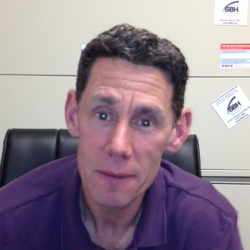Raising Problem Gambling Awareness: 2013 Recap and 2014 Preview Posted On
Every year, we seek to raise awareness about gambling addictions in New York State. For many reasons, 2013 was a tremendous year for raising problem gambling awareness, but we are left with plenty to be done as the year comes to an end and we begin to think about goals for 2014.
Raising Awareness of Problem Gambling’s Definition
One of the major developments of 2013 was the publishing of the Diagnostic and Statistical Manual of Mental Disorders, Fifth Edition, or DSM-5, which recognized the “gambling disorder” (previously referred to as pathological gambling) as a disorder similar to substance-related disorders with regard to clinical expression, where it originates in the brain, physiology and treatment required. This is a different categorization than it had been previously, when it was considered an impulse-control issue such as compulsive hair pulling and kleptomania. Gambling is the first process (action, rather than substance such as drugs and alcohol) to be officially considered an addictive disorder.
This was a major step forward for us. With this recognition, people with gambling disorder will be able to find and arrange treatment more easily. It will help others understand severe problem gambling better, now that they can compare it medically to the substance abuse disorder many people already understand well.
The DSM-5 is a guide provided by the American Psychiatric Association (APA), so this classification affects individuals not just in New York State, but throughout the country, and it drives recognition and treatment of mental disorders worldwide.
Gambling Expansion
On Tuesday, November 5, Proposition 1 passed with 57 percent of the vote. The amendment’s passing now means that New York State can move forward with the development of as many as seven casinos, including four commercial gambling parlors in three upstate regions.
In times when gambling is on the rise, there will be conversations started by people who are pro-casinos, while there will extremely anti-casinos. The New York Council on Problem Gambling remains neutral in this discussion, as our mission is to raise awareness of problem gambling. The discussion of all, for, neutral and against increased gambling opportunities, raises awareness about the risks and consequences of disordered gambling.
What does this mean?
Now every media source is talking about problem gambling. More people than ever, from lawmakers and psychologists to people of all demographics, are aware of problem gambling, and that is a tremendous success for us. When people are considering the potential benefits of gambling expansion, they have to discuss the consequences as well. The resulting discussion is more than we’ve ever had.
More Gambling Addiction Awareness & Prevention Efforts
In 2013, we saw an increased effort by many to raise awareness about problem gambling and the dangers of exposing our youth to gambling. The New York State Gaming Commission has taken a tougher stance than ever on underage gambling, raising awareness about illegal underage gambling and, for the first time, strictly enforcing fines and penalties. The Responsible Play Partnership was created in collaboration with the gaming commission, the Office of Alcohol and Substance Abuse Services and the New York Council on Problem Gambling.
Problem Gambling Awareness: What Can We Expect in 2014?
We’ve seen more people call the NYS HOPEline (1-877-8-HOPENY) this year than we have previously, but there are still many issues to address.
We’re still in the awareness stage of problem gambling. The more we can do to make people aware of it, the more people we will help in the long run. I asked people in Saratoga Springs this week, “What is your plan to address problem gambling in your community?” They might have a plan for everything else when it comes to a new casino, but how are they addressing problem gambling in a city that already has a high rate of gambling?
We couldn’t be more pleased with the raise in awareness in 2013, and the energy, time and resources organizations such as the NYS Gaming Commission and OASAS have dedicated to addressing needs.
We still have research needs. We still need to educate people. We need to raise awareness, and we have serious recovery needs. We still don’t have enough resources, treatment facilities and trained individuals for access to treatment to be readily available across NYS. For every New Yorker that needs services, we need them to be able to access it without difficulty.
There’s plenty of work to be done next year, but we’re prepared to see tremendous change in areas such as research and treatment moving forward – all change for the better.



[…] Interested in KnowTheOdds’ goals for 2014? Learn more about what we’ll be working to achieve next year in our post “Raising Problem Gambling Awareness: 2013 Recap & 2014 Preview.” […]